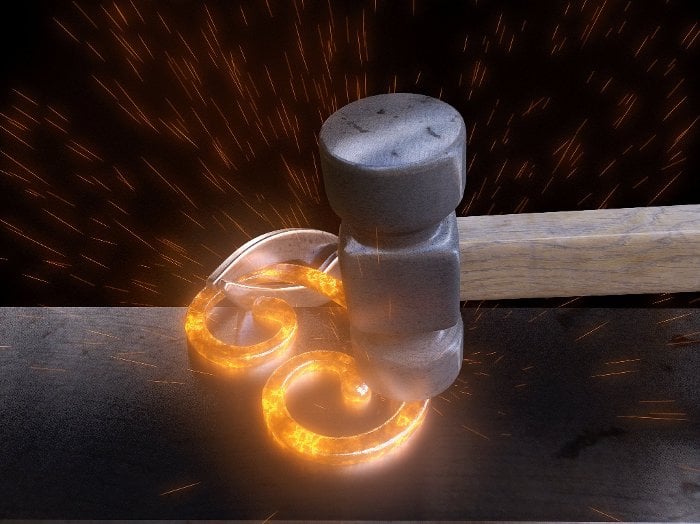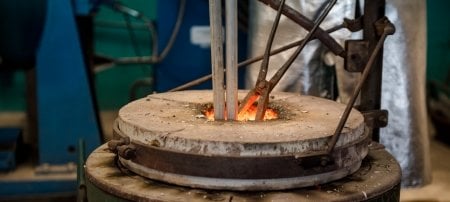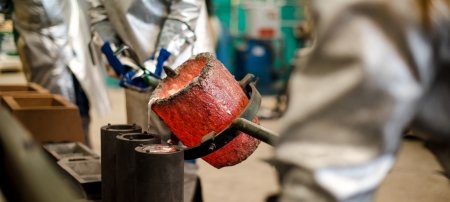Blacksmithing: a Problem-Solving Art

Mention blacksmithing, and what comes to mind is hammering metal into swords, armor and horseshoes on large anvils. However, sometimes blacksmithing is more than that. A Michigan Technological University student who has shared his interest in the art with a campus organization calls blacksmithing “the art of shaping iron.”
Adam Rieiderer is a sixth year Michigan Tech physics major with a concentration in secondary education. He has always had an interest in blacksmithing. As a kid, he loved making things and playing with clay. “It may be hard to believe,” he says, “but moving iron is a lot like working with clay, except it’s really hot and you have to use hammers instead of your hands.”
Riederer became more serious with the art when he met Steve Alling, president of the Michigan Artist Blacksmith’s Association, about five years ago. Lessons began, and Riederer was then able to get his own equipment.
Working on his own, Riederer has made numerous pieces. He says, “I’ve made handles for barns, scrapers for horse hooves, hooks for hanging plants, axes and knives, and even a few small swords.” He enjoys makings blades and tools the most because he “just sees them as beautiful.”
Although blacksmithing is mainly a hobby for Riederer, it has already helped him with his future teaching career. He started the Smithing Guild, a blacksmithing student organization on campus, in 2011. In the organization, he has taught the art of blacksmithing to many people. “Teaching people in the blacksmithing club has helped me find new ways of teaching people, and it’s helped me get better at teaching subjects other than physics,” he says.
Riederer founded the Smithing Guild because he wanted a place to blacksmith at Tech, and he had a lot of friends who were interested. He thought that a campus organization could give more people the opportunity to practice this art of shaping iron. The club has 16 current members, and within the last year, it obtained space at the Materials Science & Engineering foundry to forge (to heat the metal for blacksmithing). A lot of the members are still learning the art, so most of the projects are ones that individuals want to try. Open-forging normally happens on Saturday afternoons. This is a time that club members can use the foundry to work on their personal projects.
Could anyone try this? According to Riederer, the answer is yes. “A lot of people think blacksmithing as swinging really heavy hammers and a whole lot of force and grunting,” he explains. “There are professionals and… famous [blacksmithing] people who use the really big, heavy hammers, but some use very light one-pound hammers.” Either way, they make equally beautiful pieces.
Everyone should know a little about blacksmithing because it helps the understanding of material properties. Riederer adds, “A lot of blacksmithing is basically thinking out of the box and finding really simple solutions to problems … that you normally wouldn’t think of.” Riederer and his friends call it “a good-problem –solving hobby.”
[If you would like to find out more about the Smithing Guild, check them out on www.involvement.mtu.edu.]
Michigan Technological University is a public research university founded in 1885 in Houghton, Michigan, and is home to more than 7,000 students from 55 countries around the world. Consistently ranked among the best universities in the country for return on investment, Michigan’s flagship technological university offers more than 120 undergraduate and graduate degree programs in science and technology, engineering, computing, forestry, business and economics, health professions, humanities, mathematics, social sciences, and the arts. The rural campus is situated just miles from Lake Superior in Michigan's Upper Peninsula, offering year-round opportunities for outdoor adventure.




Comments